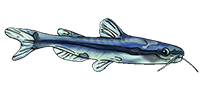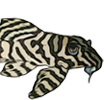doi:10.1371/journal.pone.0189789
http://journals.plos.org/plosone/articl ... ne.0189789
Read after the abstract (reproduced below) for list of proposed new species, subspecies, and key to the genus.
They recognize and create a whole lot of new species and subspecies:Fisch-Muller et al. wrote:Abstract
Characterizing and naming species becomes more and more challenging due to the increasing difficulty of accurately delineating specific bounderies. In this context, integrative taxonomy aims to delimit taxonomic units by leveraging the complementarity of multiple data sources (geography, morphology, genetics, etc.). However, while the theoretical framework of integrative taxonomy has been explicitly stated, methods for the simultaneous analysis of multiple data sets are poorly developed and in many cases different information sources are still explored successively. Multi-table methods developed in the field of community ecology provide such an intregrative framework. In particular, multiple co-inertia analysis is flexible enough to allow the integration of morphological, distributional, and genetic data in the same analysis. We have applied this powerfull approach to delimit species boundaries in a group of poorly differentiated catfishes belonging to the genus from the Guianas region of northeastern South America. Because the species G. brevispinis has been claimed to be a species complex consisting of five species, particular attention was paid to taxon. Separate analyses indicated the presence of eight distinct species of Guyanancistrus, including five new species and one new genus. However, none of the preliminary analyses revealed different lineages within G. brevispinis, and the multi-table analysis revealed three intraspecific lineages. After taxonomic clarifications and description of the new genus, species and subspecies, a reappraisal of the biogeography of Guyanancistrus members was performed. This analysis revealed three distinct dispersals from the Upper reaches of Amazonian tributaries toward coastal rivers of the Eastern Guianas Ecoregion. The central role played by the Maroni River, as gateway from the Amazon basin, was confirmed. The Maroni River was also found to be a center of speciation for Guyanancistrus (with three species and two subspecies), as well as a source of dispersal of G. brevispinis toward the other main basins of the Eastern Guianas.
- brevispinis (Heitmans, Nijssen & Isbrücker, 1983)
- bifax, new subspecies
- orientalis, new subspecies
- Mol, Fisch-Muller & Covain, new species
- Mol, Fisch-Muller & Covain, new species
- , new species
- , new species
- , new species
- Cryptancistrus new genus
- , new species
Key to species of Guyanancistrus.
- Presence of distinct spots on body and fins, all spots roundish and smaller than size of a lateral dermal plate; pectoral-fin spine length 31.9–45.5% of SL. .....2
- Absence of distinct spots on body and fins, or presence of spots at least as large as a dermal plate, or coalescing, or forming bands on posterior part of body and fins; pectoral-fin spine length 22.2–34.4% of SL. .....3
- Body and fins covered with small roundish yellow spots; odontodes on dorsolateral margin of the upper lip minute; dorsal-fin base length 29.0–32.0% of SL. .....
- Body and fins covered with minute white dots; odontodes on dorsolateral margin of the upper lip elongated (Fig 7D); dorsal-fin base length 24.8–28.8% of SL. .....
- Anal fin with 4 branched rays; dentary tooth cup 24.2–31.9% of head length. .....
- Anal fin with 5 branched rays; dentary tooth cup 23.6% or less of head length. .....4
- Longest evertible cheek odontodes reaching the first half of the opercle (except in some large specimens surpassing 70 mm SL reaching the third quarter but not reaching its last quarter). .....
- Longest evertible cheek odontodesreaching the last quarter of opercle or beyond its posterior end (except in very small specimens). .....5
- Pelvic-fin spine not reaching origin of anal fin. .....
- Pelvic-fin spine reaching beyond origin of anal fin. .....6
- Orbital diameter 1.7–2.1 times in interorbital width; depth of caudal peduncle 3.1–3.6 times in its length. .....
- Orbital diameter 2.2–2.4 times in interorbital width; depth of caudal peduncle 2.5–3.0 times in its length. .....7
- Pelvic-fin spine reaching beyond end of anal fin base; depth of caudal peduncle 2.5 times in its length. .....
- Pelvic-fin spine not reaching beyond end of anal fin base; depth of caudal peduncle 2.9–3.0 times in its length. .....














